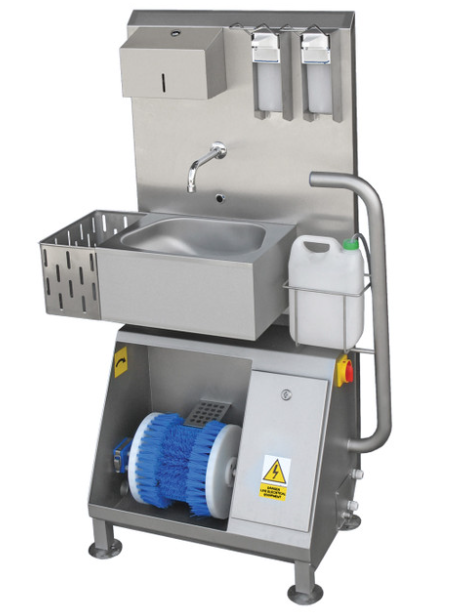MEFE is proud to supply state-of-the-art hygiene access
Posted by MEFE Hygiene on 7th Jul 2023
We have the solution for any industry that relies on proper hygiene and prevention of cross-contamination. We offer stand-alone turnstiles or complete hygiene stations that can be integrated into existing hygiene protocols, complementing other measures such as hand wash, boot wash and apron wash stations.
Our hygiene stations are available in various configurations. Use our Selection Guide to find the best design for your project.
What is the purpose of a hygiene lock?
A hygiene lock is a controlled entrance or exit that enforces hygiene protocols using access control. This is achieved by installing turnstiles at critical points that can only be activated by performing a hygienic action, such as disinfection of the hands, or passage through footwear cleaning. The effective and efficient design of the hygiene lock should consider the number of personnel, the protective clothing worn, and the specific risks the user needs to address.
In an abattoir (also known as a slaughterhouse), the lock is typically placed between areas with different cleanliness levels or levels of potential biohazards. For example, it may be positioned between the unloading or receiving area and the main processing area, or between the processing area and the packaging or storage area.
By using a hygiene lock, an abattoir can minimize the risk of introducing contaminants, dirt, or microorganisms into the different production zones and create a controlled transition zone preventing cross-contamination between different batches of animals, carcasses, or meat products.
In food production hygiene lock serves to maintain and control the cleanliness, sanitation, and safety of the production environment, particularly in areas where raw materials are received, processed, and packaged. The entry of contaminants, such as dust, allergens, pests, or foreign materials can have a significant impact on product quality and safety.
By implementing a hygiene lock, a food plant can establish and enforce proper sanitation practices. This includes protocols for handwashing, donning and doffing of personal protective equipment (PPE), and adherence to specific hygiene procedures before entering different zones.
What are the different brush types and their use?
Profiled disc brush


The profiled disc brush is a short brush designed to wash and scrub the sole and sides of footwear and is ideal when size matters. Often paired with an in-built hand wash basin, this brush is used as an effective hygiene solution for removal of contaminants on footwear, especially in small spaces.
Horizontal brush


The horizontal brush washes and scrubs the soles of footwear and is designed for passage. We can supply various lengths starting from 300 mm and up to 1200 mm. The length of the horizontal brush depends on how much cleaning time is required and the number of expected users. Heavily soiled boots will require a longer passage for effective cleaning, likewise, a longer passage can allow for higher throughput of personnel. These passages can lead to separate hand wash stations, turnstiles, or have integrated functions.
Vertical brush


The vertical brush is available in heights of 70, 150 and 300 mm and is designed for medium to high boots. It is effective when the full footwear (sole, sides and shank) needs to be washed and scrubbed and is paired with a horizontal brush for the soles underneath. Horizontal brushes may be stand-alone or paired with a passageway.
FAQs
Can I change which side the turnstile is on?
Yes, the turnstile can be on either side of the unit and can be confirmed at time of production.
How are the units installed?
Simply connect the water supply (standard inlet is ½” connection) and the wastewater outlet (standard outlet is 50 mm diameter). Connect the power. Specifications may differ between units, refer to the individual product.
How does the boot wash start and stop?
The boot wash systems are sensor controlled. The motorised brushes, water supply, and cleaning solution will start as the user passes or is in view of the sensor and stop once the user passes the exit sensor or leaves the view of the sensor.
How does the turnstile work?
The turnstile is activated by performing the required hygiene action and will turn 1/3 once completed. The turnstile is programmed for free return (access from the opposing direction). If a single direction is required, the turnstile can be programmed to operate as one-way only.
What are the electric supply requirements?
Generally, 400V 3 phase. Specifications may differ between units, refer to the individual product.
What does bi-directional mean?
A user can enter from both sides, with individual sensors at both ‘entry’ and ‘exit’.
What is the Ingress Protection (IP) rating?
Generally, IP65 for control modules and IP55 for the drive motor. IP ratings may differ between units, refer to the individual product.
All information current at the time of posting.
